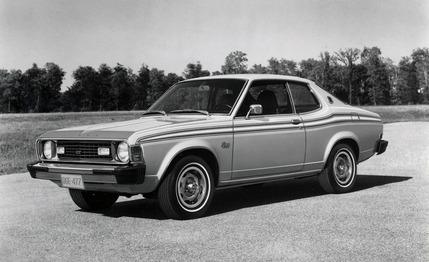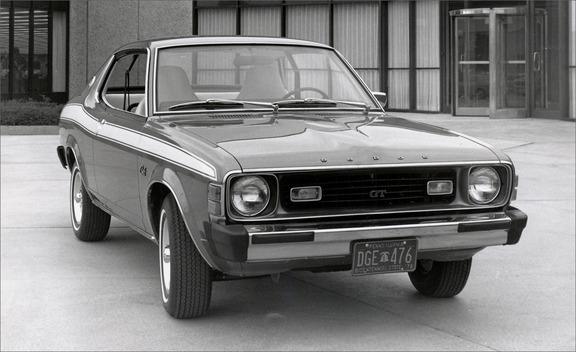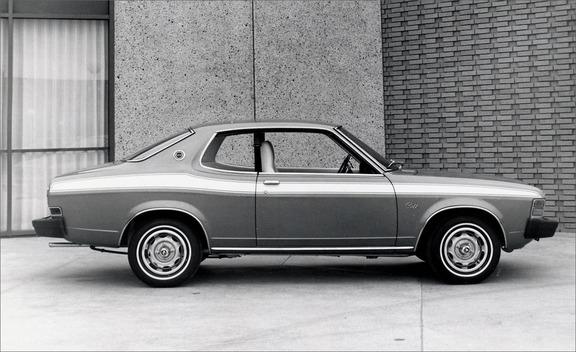 Archived Road Test
Archived Road Test
While most of the automotive world seems to be slowly sinking into a legislative morass and responding with little more than an occasional ineffective twitch, Japan Incorporated continues to send us creative solutions to intricate problems. The Japanese mastered small cars long before the fuel crunch forced everyone else into sizing down. They alone made the Wankel work. In emissions-control technology, the Far East still enjoys a comfortable lead, primarily through thermal reactors and stratified-charge designs. While Detroit retreats and retrenches, shedding engines and powertrain choices by the numbers, Japan is fortifying most models with five speeds and breaking new ground with four-wheel-drive subcompacts. If An Answer to our next crisis (whatever it may be) is near, there's little doubt from whence it will come.
One more convincing clue is the Astron 80. This little piece of future shock is standard as long as you choose the two-liter engine in a new Dodge Colt. Dealers here probably won't know what you're talking about until you whisper the code words "silent shaft," but by any name, it's another thoughtful gift from across the Pacific. The idea is as old as the automobile itself (see subpage), but only the Japanese have been resourceful enough lately to dust off their textbooks, tool up and produce.
Silent shafts turn your ordinary, garden-variety four-cylinder engine from a clattering stone into a machine of cultivated grace. The folks at Mitsubishi couldn't have chosen a better base for refinement, since their two-liter engine already enjoys more than its share of the best hardware: an aluminum cylinder head with hemispherical combustion chambers fed by cross-flow porting and an overhead camshaft. The power curve peaks healthily at 96 bhp, and the exhaust comes out clean with no messy air pump or catalytic converter.
Add silent shafts, stir to a six-grand simmer and you'll bet your valve cover there are at least six cylinders under the hood. The only problem is that you'll no longer be able to shift by ear. The normal clamor of mechanical distress near the redline typical of four-bangers (they aren't called that for nothing) just isn't a part of the Colt's character. It sounds as happy at 6000 as it does at four.

A smooth engine is one more step in the continuing Colt improvement program. Massaged-in-Detroit styling replaced the old narrow look in 1974, the powerplant was increased to two liters last year (mated only to a Torqueflite automatic transmission), while the silent-shaft addition is this year's master stroke.
Also new is a five-speed gearbox behind the big motor. It's an overdrive-top-gear transmission like everyone else is using, so between silent shafts and tall gearing, the Colt has its highway act down pat. At 60 mph, you cruise at a calm 2800 rpm, and at 70, the sound-level meter says the engine can't be heard. For all the average driver is likely to know, there's a Wankel under the hood.
Until he checks the gas gauge. In that respect, the Colt still enjoys a four-cylinder's only genuine virtue: over-20-mpg economy no matter how hard you flog it. In the C/D mileage cycle, we measured 23.0 mpg in city driving and 25.5 on the highway. That's roughly three mpg less than an economy champion such as the 1976 VW Rabbit, but there is compensation in that the Colt is quite happy with cheaper leaded fuel, even in California.
Once the masses get over their fear of small cars, there's no reason why they shouldn't stampede the Colt's corral. There are hardtops, four-doors and woodgrain wagons aplenty to fulfill basic requirements for individuality. You can get into silent shafts and five on the floor in the GT hardtop for less than $4000, and all Colts roll off the boat with enough standard equipment to make the competition wonder how to compete. Like most Japanese manufacturers, Mitsubishi wouldn't think of building a car without excellent ventilation, reclining seats, a locking gas lid and an electric rear window defogger. Also, Colts have long enjoyed a small-car exclusive in their adjustable steering column.
And silent shafts are not the only clever new idea for 1976. Radio antennas have long been a minor irritant to buyers and manufacturers alike because they're tempting marks for vandals. The General Motors solution of imbedding a fine wire in the windshield is meritorious, but there is a sacrifice in weak-signal reception. Mitsubishi, however, has delivered a seemingly ideal alternative: They've shrewdly integrated the Colt's antenna into the decklid. There are insulators at latch and hinge points, so the whole metal panel can collect radio waves and feed the signal to the receiver through a simple cable connection. Reception is excellent, there's nothing to break, and thieves have one less clue that an expensive radio awaits them inside.

The Colt offers the standard American buyer the same things that make Japanese cameras, electronic equipment and motorcycles so hard to resist: artful design, loads of standard features, high quality and affordable price. For the super-discriminating car freak, however, the Colt will provide some serious disappointments. You might, for example, hope the optional GT edition would offer an improvement over baseline agility, but it's not the case. GT in the Colt means a tachometer, five-speed and 70-series radials, but nothing else more useful than trim and paint stripes. So when you challenge passages with road-course potential, the Colt delivers a strong reminder that it's really much better as a highway car. The steering is too slow to manage the heavy understeer that sets in, and the carburetor starves for fuel in cornering to rob you of the simple pleasure of entrance-ramp gymnastics. (The 1600 Colt uses a 16-percent faster steering gear, and though it will bolt right into the two-liter car, effort is increased proportionately.)
The weakest link in the Colt driver's chain of command is the rear suspension. Apparently some money has been saved here to pay for the silent shafts, because the rear axle can wind up the two-leaf rear springs like rubber bands. When you try anything so rude as a dragstrip start, the rear wheels threaten to tramp out from under the car, and there's a good deal of unnecessary shuffling back there even during ordinary hard cornering. The front suspension is not without problems, either; the tires in front seem to hunt for longitudinal pavement grooves or any irregularity that will lead them off a straight-ahead path. The GT's suspension is the obvious candidate for next year's upgrade program.
With the Japanese record of fine-tuning the Colt, you can practically bank on a quick response to the car's handling problems. Fast-advancing technology is one bargain that Chrysler gets in dealing with their Mitsubishi friends. When Detroit goes out to buy a car it can't justify building itself, you can be sure they know where to shop.